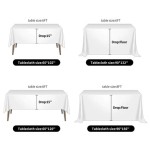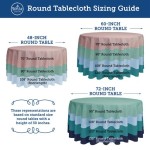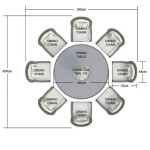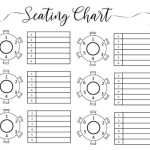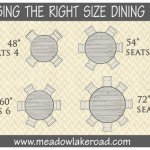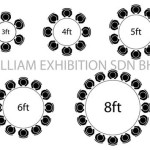A Comprehensive Guide To Tall Round Tables And Chairs
Tall round tables and chairs, often referred to as bar tables and stools or pub tables and chairs, have become increasingly popular in both residential and commercial settings. Their elevated height and circular design foster a sense of intimacy and encourage interaction, making them suitable for a variety of purposes, from casual dining to social gatherings. This guide aims to provide a comprehensive overview of tall round tables and chairs, covering their applications, design considerations, material options, and factors to consider when selecting the right set for a specific need.
The appeal of tall round tables lies in their versatility. In homes, they can serve as breakfast nooks, kitchen islands, or dedicated bar areas, adding a stylish and functional focal point. In commercial settings like restaurants, bars, and cafes, they maximize seating capacity while promoting a lively atmosphere. Their compact footprint makes them ideal for smaller spaces, while their height encourages mingling and conversation. Furthermore, the elevated seating position offers a different perspective and can enhance the overall dining or drinking experience.
The aesthetic appeal of tall round tables is also notable. Their sleek and modern designs can complement a variety of interior styles, from minimalist to industrial. The circular shape promotes a sense of unity and balance, making them visually appealing and inviting. The combination of the elevated table and chairs creates a dynamic visual element that adds character and sophistication to any space.
Understanding the Dimensions and Ergonomics
One of the most critical aspects of choosing tall round tables and chairs is understanding the relationship between table height and chair (or stool) height. The standard height for a bar table is typically between 40 and 42 inches. To ensure comfortable seating, the bar stools should have a seat height between 28 and 30 inches. This provides adequate legroom and allows users to easily reach the table surface. Counter-height tables and stools are slightly shorter, with tables generally between 34 and 36 inches high and stools between 24 and 26 inches.
When selecting the right height, consider the primary users and their needs. If the table will be used by a variety of people, including those with mobility issues, a slightly lower height may be more suitable. It's also essential to factor in the thickness of the tabletop and any floor coverings when calculating the overall height. A thicker tabletop will slightly reduce the available legroom. Some bar stools are height-adjustable, offering greater flexibility and customization. These are particularly useful in settings where multiple people will be using the furniture.
Ergonomics are paramount for ensuring comfort and preventing strain. Look for bar stools with features like footrests, backrests, and padded seats. Footrests provide support for the feet and legs, reducing fatigue during extended periods of sitting. Backrests offer lumbar support and promote proper posture. Padded seats add cushioning and enhance comfort. The overall design of the chair should allow for natural and comfortable seating posture. The seat should be wide enough to accommodate a variety of body types, and the backrest should provide adequate support without restricting movement.
The diameter of the round table is another crucial consideration. A smaller diameter is suitable for individual use or intimate conversations, while a larger diameter can accommodate more people. When determining the appropriate diameter, consider the available space and the intended use of the table. Ensure that there is sufficient space around the table for people to move freely and comfortably. A crowded space can feel cramped and uncomfortable, detracting from the overall experience.
Exploring Material Options and Durability
The materials used in the construction of tall round tables and chairs significantly impact their durability, aesthetics, and maintenance requirements. Common tabletop materials include wood, metal, glass, and laminate. Wood offers a classic and warm aesthetic, but it requires regular maintenance to prevent scratches and stains. Metal is durable and easy to clean, making it suitable for high-traffic areas. Glass offers a sleek and modern look, but it can be prone to scratches and smudges. Laminate is a cost-effective and durable option that is resistant to scratches and stains.
For chair frames, metal and wood are the most common choices. Metal frames are typically made of steel or aluminum, offering excellent strength and durability. Wooden frames provide a more traditional and elegant look. The choice of frame material depends on the desired aesthetic and the level of durability required. Metal frames are often powder-coated to prevent rust and corrosion, while wooden frames may be stained or painted to match the overall decor.
The upholstery material used on the chair seats and backrests also plays a crucial role in comfort and durability. Leather, fabric, and vinyl are common options. Leather is a luxurious and durable choice, but it requires regular conditioning to prevent cracking. Fabric offers a wide range of colors and textures, but it can be more susceptible to stains. Vinyl is a cost-effective and easy-to-clean option that is resistant to moisture and stains.
When selecting materials, consider the intended use of the furniture and the environment in which it will be placed. For outdoor use, weather-resistant materials like aluminum, teak, and synthetic wicker are essential. For high-traffic areas, durable and easy-to-clean materials are preferred. Regularly cleaning and maintaining the furniture will help to prolong its lifespan and keep it looking its best.
Design Styles and Aesthetic Considerations
Tall round tables and chairs are available in a wide range of design styles to suit various aesthetic preferences. Modern designs often feature clean lines, minimalist forms, and contemporary materials like metal and glass. Industrial designs incorporate rustic elements like reclaimed wood, exposed metal accents, and vintage-inspired details. Traditional designs showcase ornate details, rich wood finishes, and classic upholstery. Contemporary designs blend modern and traditional elements, creating a unique and sophisticated look.
When choosing a design style, consider the overall decor of the space and the desired atmosphere. A modern design can complement a minimalist or contemporary interior, while an industrial design can add character to a loft or urban space. A traditional design can create a warm and inviting atmosphere in a formal dining room, while a contemporary design can blend seamlessly with a variety of styles.
The color palette also plays a crucial role in the overall aesthetic. Neutral colors like black, white, and gray are versatile and can be easily incorporated into any space. Bold colors can add a pop of personality and create a focal point. The color of the tabletop, chair frames, and upholstery should complement each other and the surrounding decor. Consider using color to create contrast or harmony, depending on the desired effect.
The details and accents can also enhance the overall design. Consider features like decorative stitching, nailhead trim, and unique leg designs. These small details can add character and sophistication to the furniture. Pay attention to the overall proportions and balance of the table and chairs. The size and shape of the table should complement the size and shape of the chairs. The overall design should be visually appealing and aesthetically pleasing.
Ultimately, the choice of tall round tables and chairs should reflect personal style and preferences. Consider the overall design of the space, the intended use of the furniture, and the desired atmosphere. By carefully considering these factors, it is possible to create a stylish and functional space that reflects individual taste and enhances the overall living or working experience.

Circle Furniture S Complete Guide To Furnishing A Dining Room

Expert Advice How To Design A Perfectly Scaled Dining Room The Kuotes Blog

The Ultimate Guide To Dining Table Seat Height

The 7 Best Dining Tables And How To For One Reviews By Wirecutter

Ultimate Guide To Standard Counter Height And Bar Tables

Ultimate Guide To Dining Chairs

Dining Table Dimensions The Complete Guide

The Ultimate Guide To Dining Chair Size Height Width Lakeland Furniture Blog

An Almost Complete Guide To Outdoor Dining Set

Ultimate Guide To Standard Counter Height And Bar Tables
Related Posts

